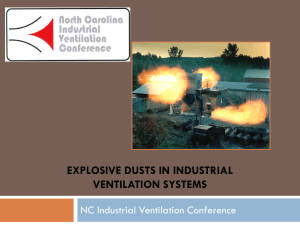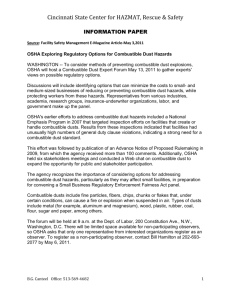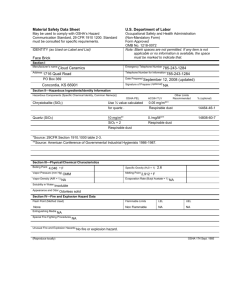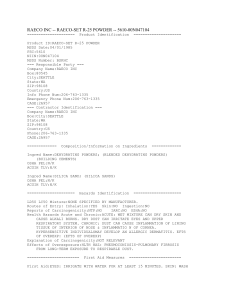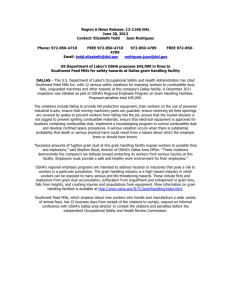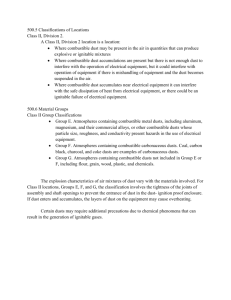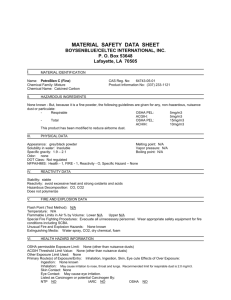viewed here
advertisement
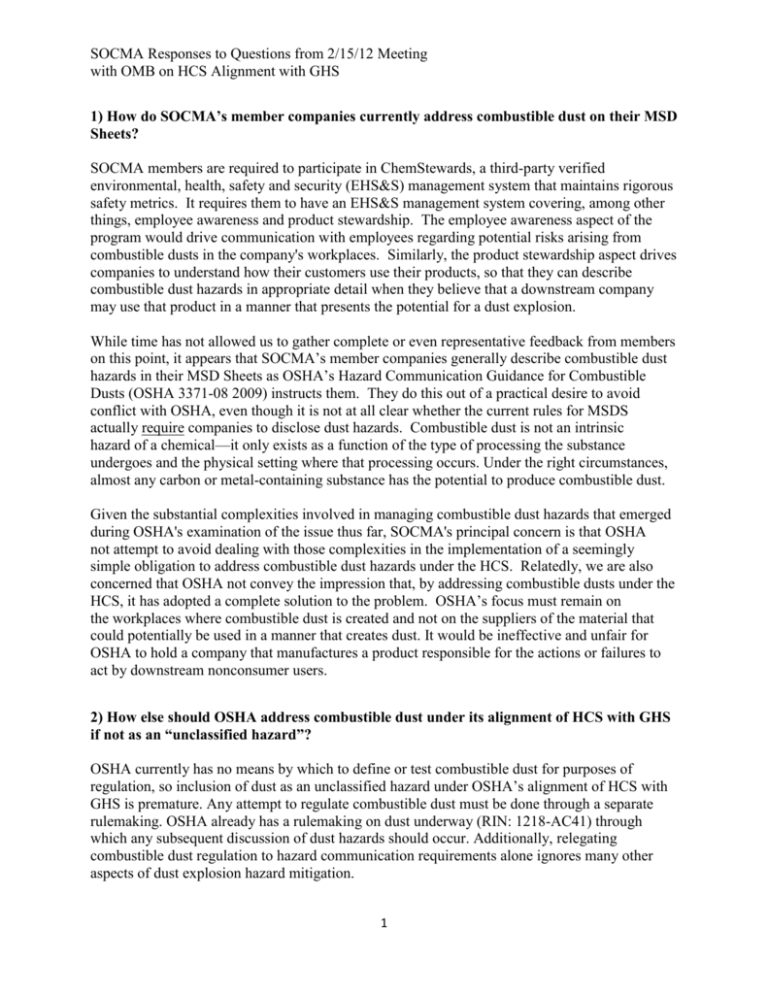
SOCMA Responses to Questions from 2/15/12 Meeting with OMB on HCS Alignment with GHS 1) How do SOCMA’s member companies currently address combustible dust on their MSD Sheets? SOCMA members are required to participate in ChemStewards, a third-party verified environmental, health, safety and security (EHS&S) management system that maintains rigorous safety metrics. It requires them to have an EHS&S management system covering, among other things, employee awareness and product stewardship. The employee awareness aspect of the program would drive communication with employees regarding potential risks arising from combustible dusts in the company's workplaces. Similarly, the product stewardship aspect drives companies to understand how their customers use their products, so that they can describe combustible dust hazards in appropriate detail when they believe that a downstream company may use that product in a manner that presents the potential for a dust explosion. While time has not allowed us to gather complete or even representative feedback from members on this point, it appears that SOCMA’s member companies generally describe combustible dust hazards in their MSD Sheets as OSHA’s Hazard Communication Guidance for Combustible Dusts (OSHA 3371-08 2009) instructs them. They do this out of a practical desire to avoid conflict with OSHA, even though it is not at all clear whether the current rules for MSDS actually require companies to disclose dust hazards. Combustible dust is not an intrinsic hazard of a chemical—it only exists as a function of the type of processing the substance undergoes and the physical setting where that processing occurs. Under the right circumstances, almost any carbon or metal-containing substance has the potential to produce combustible dust. Given the substantial complexities involved in managing combustible dust hazards that emerged during OSHA's examination of the issue thus far, SOCMA's principal concern is that OSHA not attempt to avoid dealing with those complexities in the implementation of a seemingly simple obligation to address combustible dust hazards under the HCS. Relatedly, we are also concerned that OSHA not convey the impression that, by addressing combustible dusts under the HCS, it has adopted a complete solution to the problem. OSHA’s focus must remain on the workplaces where combustible dust is created and not on the suppliers of the material that could potentially be used in a manner that creates dust. It would be ineffective and unfair for OSHA to hold a company that manufactures a product responsible for the actions or failures to act by downstream nonconsumer users. 2) How else should OSHA address combustible dust under its alignment of HCS with GHS if not as an “unclassified hazard”? OSHA currently has no means by which to define or test combustible dust for purposes of regulation, so inclusion of dust as an unclassified hazard under OSHA’s alignment of HCS with GHS is premature. Any attempt to regulate combustible dust must be done through a separate rulemaking. OSHA already has a rulemaking on dust underway (RIN: 1218-AC41) through which any subsequent discussion of dust hazards should occur. Additionally, relegating combustible dust regulation to hazard communication requirements alone ignores many other aspects of dust explosion hazard mitigation. 1 SOCMA Responses to Questions from 2/15/12 Meeting with OMB on HCS Alignment with GHS The Chemical Safety Board (CSB) recently issued a recommendation that OSHA pursue a rulemaking to establish a comprehensive national combustible dust standard. OSHA should follow the CSB’s recommendation and continue pursuing development of a dust standard through the required rulemaking process to (1) establish a definition and regulatory scope for combustible dust; (2) establish a system for testing or measuring dust; and (3) identify a regulated community based on risk before it moves forward with including dust under GHS. Following the rulemaking requirements established by the OSH Act (and related laws like the Regulatory Flexibility Act) would ensure that steps taken to regulate dust hazards would include public comment and be consistent with the principles of transparency and accountability that underlie those statutes. In the meantime, SOCMA believes that the appropriate way for OSHA to address combustible dust hazards is through guidance, as it does now. As OMB's own Bulletin on Good Guidance Practices makes clear, guidance educates the regulated community and indicates the agency's current views of the issue. At the same time, because it is not legally binding on either the agency or regulated entities, it gives both a degree of flexibility to address case-specific issues that a rule would not provide, and lessens the potential for unfair coercion that an overly-general regulation can create. 2
